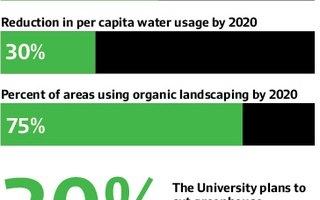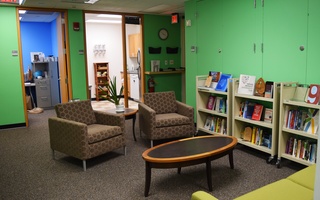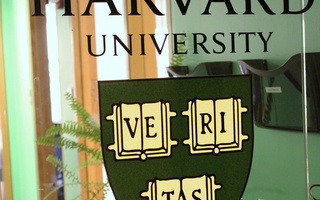Harvard has successfully reduced greenhouse gas emissions by 30 percent since 2006, according to a report from the Office for Sustainability.
The report, released Friday, detailed recent progress in Harvard’s efforts to reduce waste and emissions, as well as a new initiative to promote the use of environmentally-friendly materials in campus infrastructure projects.
Harvard reduced waste per capita and water use by 43 and 24 percent, respectively, against a 2006 baseline and was able to use 60 percent organic materials in landscaping. By 2020, the office hopes to reduce waste by 50 percent and water use by 30 percent. The office also aims to use 75 percent organic materials in landscaping by 2020.{shortcode-e0089a2abc9cdb89ba3c684d913d00a6ffaee1e2}
In addition to drastic reductions in emissions, waste, and water use, the report said that Harvard launched a program to research and pilot the use of more sustainable building and interior design materials in construction. The program, called the Healthier Building Materials Academy, is overseen by the Office of Sustainability and partners with Harvard faculty to educate project managers on sustainable building initiatives.
“The other thing that we did in conjunction with it was becoming a founding partner in a transparency tool called Portico, which was created by Google and the Healthy Building Network,” Heather Henriksen, the Office for Sustainability’s director, said. “We’re looking at things like carpet and furniture. Are there things that we can do in partnership with Google, in partnership with higher education institutions, to move the marketplace to create healthier building materials?”
She added that the project spans several of Harvard’s schools.
“Our faculty at the School of Public Health, the Medical School, and [the School of Engineering and Applied Sciences] have been at the cutting edge of studying chemicals of concern, and indoor air quality, and the built environment,” Henriksen said.
The office also expanded the “living lab” project, which supports student-led projects in sustainability at Harvard, last year.
Henriksen said the Campus Sustainability Innovation Fund—a grant program launched in 2016 to further the living lab initiative—provides students and faculty with an opportunity to secure funding for non-traditional sustainability research.
While the sustainability report was focused on Harvard’s on-campus work, Henriksen said she hopes its results will have impact beyond the University.
“This isn’t just about making it happen on Harvard’s campus,” Henriksen said. “This is about using Harvard’s campus as a test bed, to prove that these things can happen at scale, and then releasing that data and information so that others can do it.”
—Staff writer Harshita Gupta can be reached at harshita.gupta@thecrimson.com. Follow her on twitter @harshitagupta_.
Read more in University News
Report Shows Increase in Faculty Diversity Over Past Ten YearsRecommended Articles
-
 University Sets New Goals for Curbing Consumption, Waste
University Sets New Goals for Curbing Consumption, Waste -
Scientist Discusses Health, Campus SustainabilityArlene D. Blum discussed her work to reduce use of what she called harmful flame retardant chemicals in consumer products, which she praised Harvard for moving away from in recent years.
-
 Sustainability Office Relocates to Harvard Square
Sustainability Office Relocates to Harvard Square -
 New 'Living Laboratory' Initiatives to Increase Sustainability Funding
New 'Living Laboratory' Initiatives to Increase Sustainability Funding -
 Harvard Meets Goal of Reducing Emissions Since 2006
Harvard Meets Goal of Reducing Emissions Since 2006













